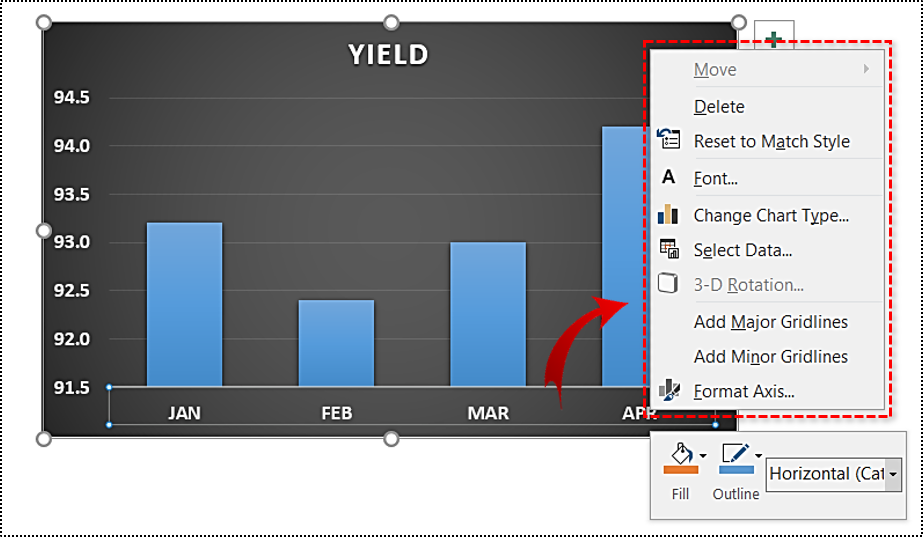

- #EXCEL 2016 MAC MOVE VERTICAL AXIS HOW TO#
- #EXCEL 2016 MAC MOVE VERTICAL AXIS SERIES#
- #EXCEL 2016 MAC MOVE VERTICAL AXIS DOWNLOAD#

Note that I used the word "creating" and not "inserting".
#EXCEL 2016 MAC MOVE VERTICAL AXIS HOW TO#
How to create a waterfall chart in Excelīefore Office 2016 creating waterfall charts in Excel was a notoriously difficult process. For example, you might want to use Net revenue and Gross Income as two checkpoints between Gross Revenue and Net income starting and ending values.

Tip: While the most typical waterfall chart is the one with a starting and ending value, you can also create subtotals as visual milestones in the series.
#EXCEL 2016 MAC MOVE VERTICAL AXIS SERIES#
In a nutshell, use a waterfall chart whenever you want to show how a starting value increases or decreases through a series of positive or negative changes. Showing product value over a period of time.Analyzing inventory or sales over a period of time.Highlighting budget changes on a project.Other examples of quantitative analyses, where waterfall charts are used, include: Waterfall charts are popular in the corporate and financial environment because they are very useful for a visualization of the positive and negative movements within a measured quantity or KPI, such as your Monthly Net Profit or Cash Flow. Some people like to connect the lines between the contributions to make the chart look like a bridge (giving us the bridge chart name), while others leave the columns floating. Note: Other fun names for waterfall charts include Mario chart and flying bricks chart, because individual chart elements resemble an old arcade game. The floating columns between them are the contributing positive or negative values. In a waterfall chart, the first column is the starting value and the last column is the end value. In other words, it's an ideal way to visualize a starting value, the positive and negative changes made to that value, and the resulting end value. Waterfall charts 101Ī waterfall chart (also known as a cascade chart or a bridge chart) is a special kind of chart that illustrates how positive or negative values in a data series contribute to the total. Read on to learn why and how you can create one yourself. Unsurprisingly, it has continued to enjoy widespread popularity to this day. Prior to its release, the built-in Excel waterfall chart was the most highly anticipated chart type in the financial community. Sign up to witness the live reveal & be among the first to join the new wave of reporting. With this new upgrade, creating waterfall charts will be faster and easier than ever. A brand new Zebra BI for Office is about to be released.
#EXCEL 2016 MAC MOVE VERTICAL AXIS DOWNLOAD#
Make sure to download the Excel file that accompanies this tutorial to see this example in the spreadsheet.🔥 JUST IN : This article was written for Zebra BI Add-in for Excel. That is because Excel will guess what you want the starting unit to be for the Y axis and it doesn't always know what you want. This is a simple yet important thing to know how to do in Excel. Note: You can start the Y axis at any number instead of typing a zero for step 3, input the desired number. (If your window doesn't look like this, make sure you have selected the Axis Options category from the left side of the Format Axis window) Look to the top and next to where it says Minimum click the circle for Fixed and enter a 0 (zero).


 0 kommentar(er)
0 kommentar(er)
